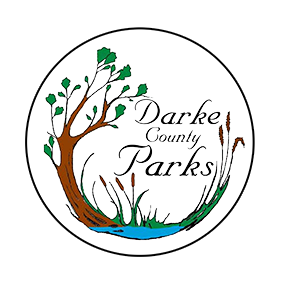Ask a Naturalist
Have you ever wondered what kind of bird is at your feeder? What kind of flowers are those? Or why is that squirrel barking at me? Look no further than your local naturalists, the people at your Darke County Park District whose job it is to help you understand the natural world around you!
Use the form to submit your question – ideally with a photo (if available), description of sighting (including size) and location of sighting (somewhere in Darke County, Ohio) – and you’ll receive an email when a naturalist responds.
What have other people been asking lately? Scroll below the form and enjoy some other naturalist Q&As on us!
Please note that while this form does collect your name and contact information, those items will not be posted with your question, only used in case we need to contact you for additional details.
Naturalist Q&As
Question:
Hello, I was wondering if the mud creek is good for kayaking? I wanted to kayak the whole thing. I would like to know if there are any low spots or dams. Thanks so much have a great day.
-Chris
Naturalist Response:
Hello Chris,
That is a great question! While we do plenty of paddling on the Greenville Creek, our knowledge of Mud Creek is limited to its flow through Turkeyfoot Preserve, Shawnee Prairie Preserve, and its confluence with Greenville Creek at Tecumseh Point Preserve. While Mud Creek is probably wide enough and deep enough to float a kayak through each of these preserves, I am unsure of anything south of Turkeyfoot Preserve.
After looking from a birds eye view of Mud Creek on Google Earth, it looks like the creek originates as a ditch around the quarry just south of Wayne Lakes, but it does not appear wide enough to paddle on. I would recommend checking out what the creek looks like near Wayne Lakes and starting around Hi-Wind Rd or Weavers-Fort Jefferson Rd if it is wide and deep enough.
***Please keep in mind, currently there are several significant blockages within the Shawnee Prairie Preserve section of Mud Creek. With high banks on either side these may prove difficult/impossible to portage around.*** I also know Turkeyfoot Preserve had some debris in the creek after all the flooding which damaged our bridge. I recommend taking a hike and putting eyes on these blockages before getting on the water anywhere on Mud Creek.
I wish you luck if this is something you pursue!
-Mitch
Question:
When should we set out our hummingbird feeders? Didn't have many last year. Think we put out too late.
Naturalist Response:
We usually recommend putting your hummingbird feeder out on April 15th (tax day) and leaving it up through Halloween.
-Naturalist Mitchell Pence
Question:
Hi there, I run an outdoor preschool and am with young children every day in the outdoors. I am an avid outdoors person and have a fair amount of knowledge, but I’m reminded every day of how much I still don’t know. I applied for and was not chosen to participate in our Maine Master Naturalist program. (Limited participants chosen each year) Curious where you got your education and certification? Thx u!
Naturalist Response:
Hey! This is a great question. Our naturalist staff each have a very unique background and took very different education paths. For example, one of our naturalists has a bachelor’s degree in Natural Science with a Biology concentration. She obtained this degree at Indiana University East. Two of our naturalists have degrees from Hocking College, one in Wildlife Resource Management and the other in Parks and Museum Education. Both of them were interns at Darke County Parks prior to being employed. Another has her degree in Leadership for Service and Change and extensive prior experience in a classroom setting. Most of our naturalist staff are also either certified or working to be certified as Certified Interpretive Guides through NAI (National Association for Interpretation). If you’re looking to improve your skills, I would also recommend attending other interpretive programs, whether that be naturalist programs at a local park or by museum docents, as you might pick up tips and tricks from other professionals.
-Naturalist Megan Hammaker







